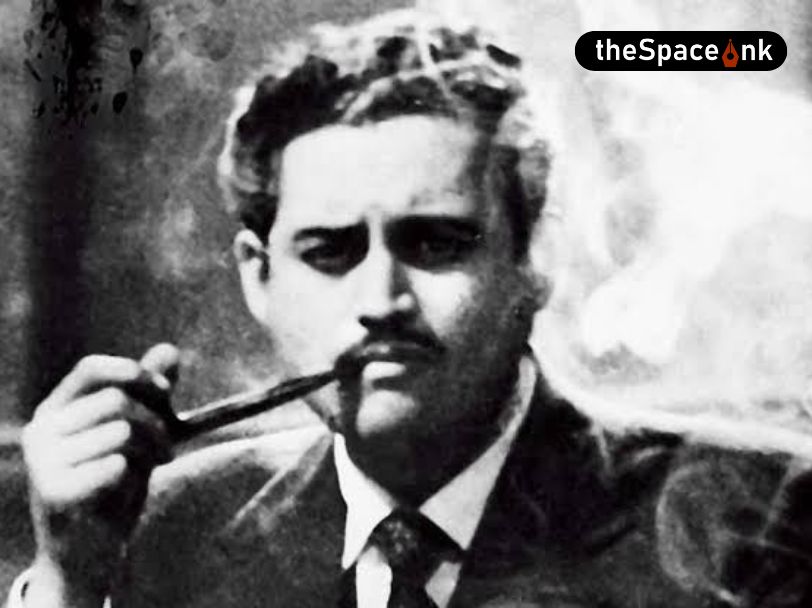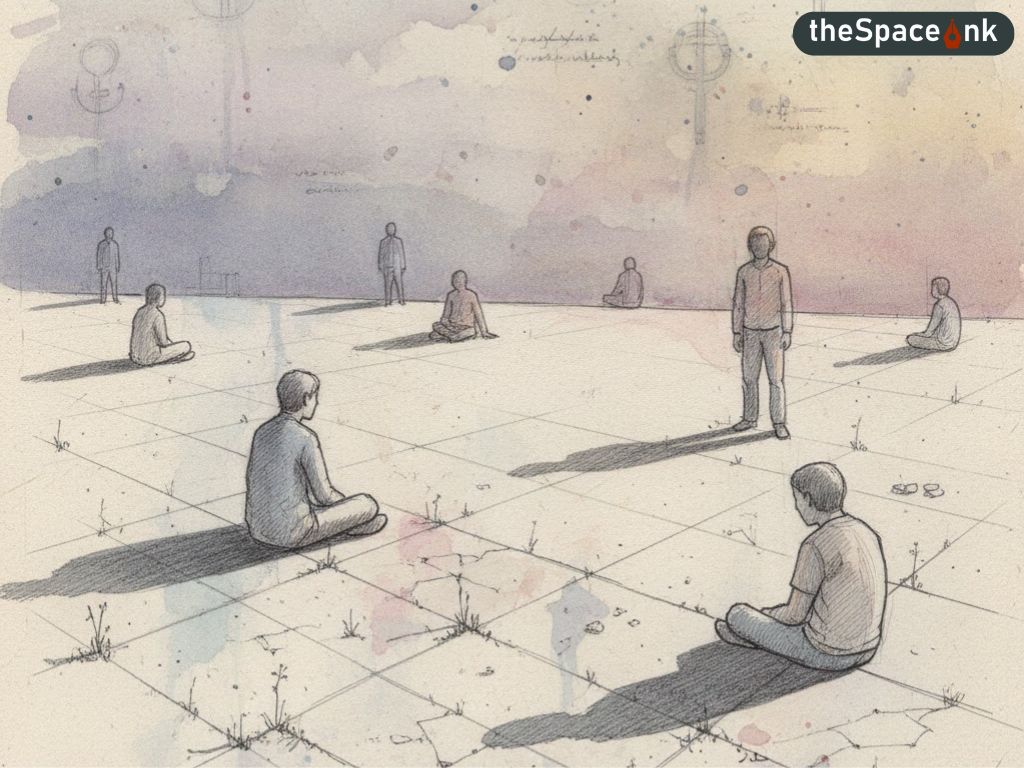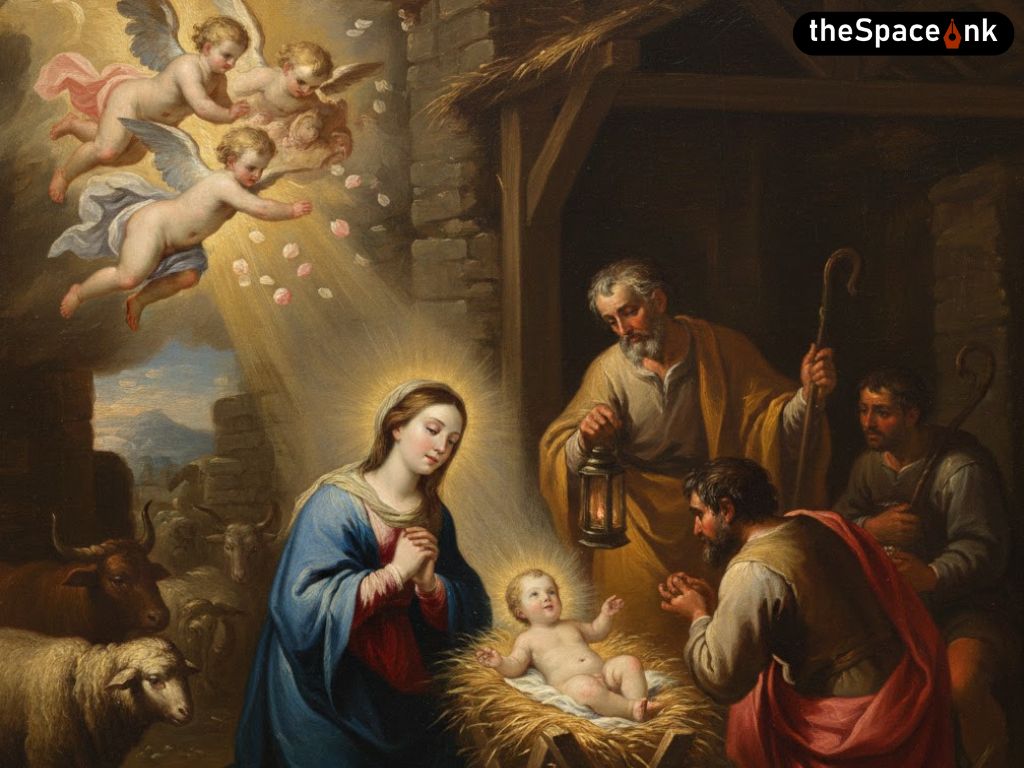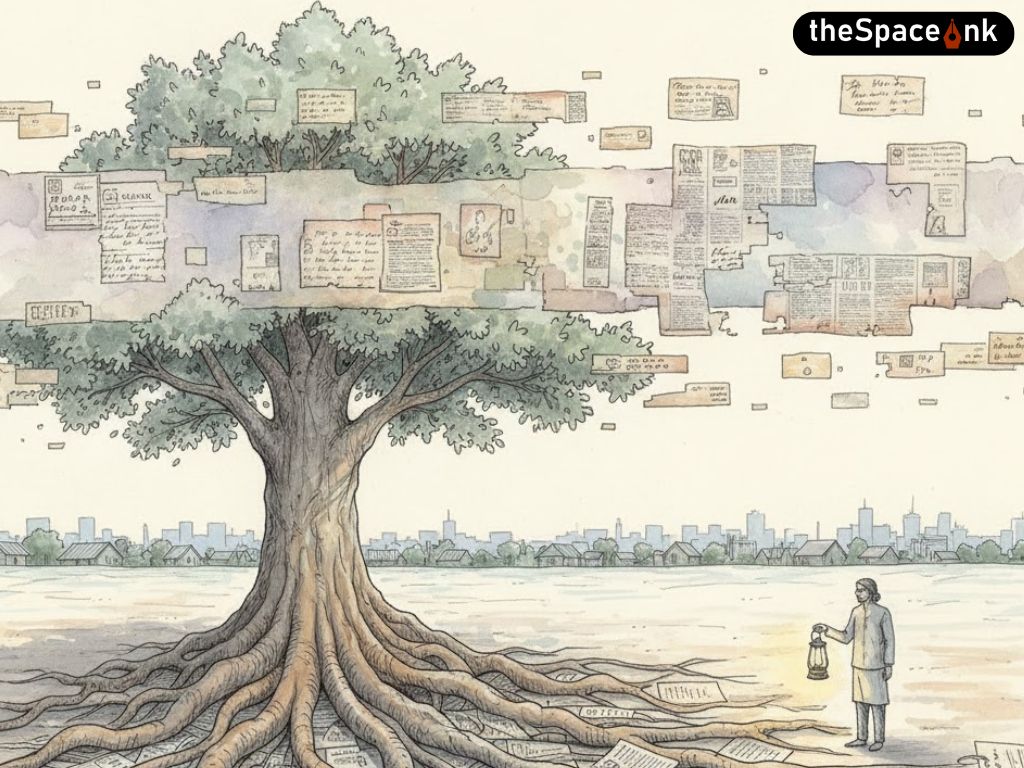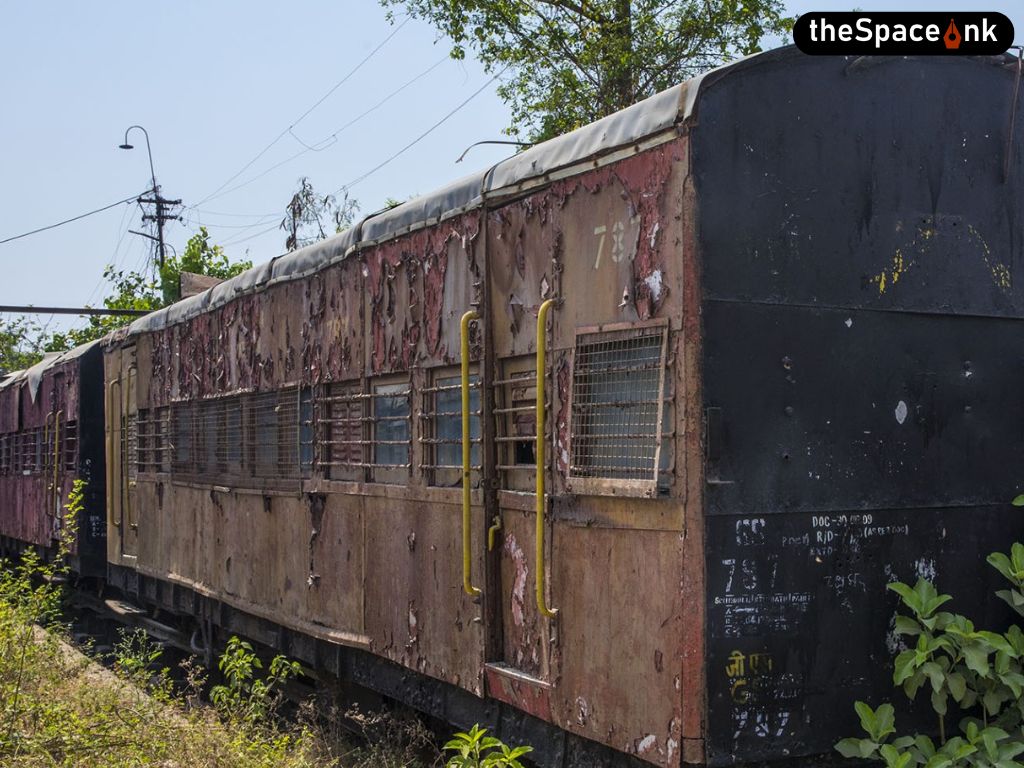I am perhaps the sole witness to the wedding ceremony of the Bengali-Hindu marriage of Guru Dutt and Gita Roy. The year was 1953 and I was barely ten years old. We were invited by Gita Roy’s family because Gita Roy was a close friend of my late mother though there was an age-gap between them.
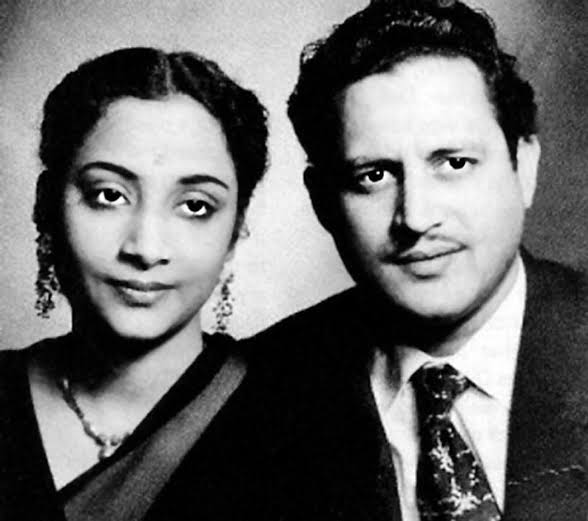
The wedding rituals happened in some hall and my mother dressed us three brothers and sisters and took us to the wedding pandal. Guru Dutt, dressed up like a Bengali bridegroom, in a white dhoti, the end pulled around his shoulders, a banyan and the typical Bengali bridegroom’s topor went ahead with the chanting of the wedding mantras repeating the mantras uttered by the Bengali priest. Gita Roy, adorned in a red sari and decked in typical Bengali bridal jewelry, looked radiant and happy. What surprised me was that Dutt looked exactly like a Bengali bridegroom, spoke Bengali fluently and chanted the marriage mantras lucidly. I never saw Guru Dutt in flesh and blood ever again.
The few films I had watched were – Pyaasa, Sahib Bibi Aur Ghulam, Jaal and a few others. I had some idea about his chronic insomnia as I had read all the installments of a memoir penned by Bimal Mitra
After my graduation, while I was holidaying in our country home in West Bengal, a small news item on 11th October, 1964, informed us about the sad demise of Guru Dutt. For some strange reason, I felt very sad though I was no great fan of his films. But the nipping of the bud at such an early age and in so tragic a manner ‘overdose of sleeping pills’ said the news item, made me very sad.
The few films I had watched were – Pyaasa, Sahib Bibi Aur Ghulam, Jaal and a few others. I had some idea about his chronic insomnia as I had read all the installments of a memoir penned by Bimal Mitra, the author of Sahib Bibi Aur Ghulam. The memoir was entitled Ghoom Nei (No Sleep) in which he narrated his long conversations with Guru Dutt when they were holidaying together in a hill station near Bombay. These readings gave me an idea about this multi-talented genius much more than I could understand from his films I was deeply moved by the installments published in the Bengali weekly.
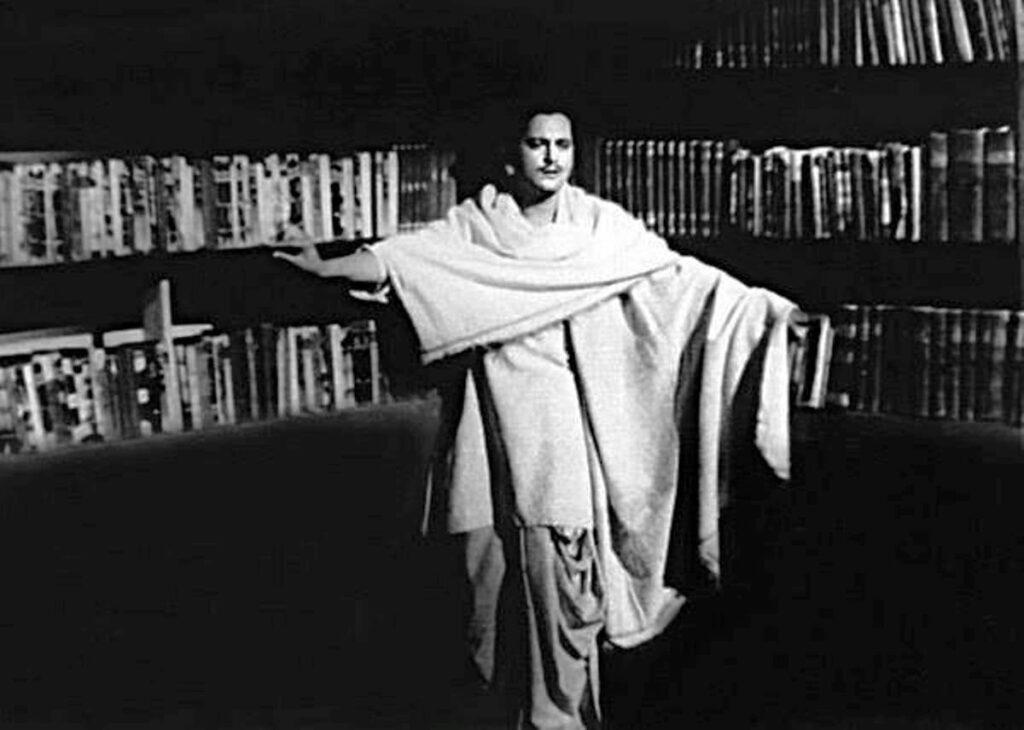
It was much later into my years in film journalism that pushed me to revisit Guru Dutt’s films and firstly, I was mesmerized by their music and the songs, their positioning within the cinematographic space of the film and the choreography of the song numbers. Then, the brilliant cinematography of which I then understood little.
Also Read: Satyajit Ray’s Nayak to Get a Theatrical Release across India
Guru Dutt was born in Bangalore on July 09, 1925. He was christened Gurudutt Padukone but with time, his first name came to be split into two and turned into the name he became famous by. The name ‘Guru’ because he was born on a Thursday, which is called ‘guru’ in most Indian languages. He was the eldest of five children – Gurudutt, Atmaram, Lalitha, Devi and Vijay. The family belonged to the Saraswat Mangalorean community noted for their fair skin and good looks. They are Brahmins originally traced back to North India. They gradually settled in different parts of the country. Their caste name is traditionally linked to river Saraswati in Kashmir, though many of them are now primarily located in coastal districts like Goa.
Guru Dutt as director, does not quite lend himself to a single genre. You cannot bracket him as a director specializing in family melodrama.
Two members of Guru Dutt’s family – Lalitha Lajmi, his sister, and Kalpana Lajmi, Lalitha’s daughter, were noted for their distinctive achievements in fine arts and films respectively. Atmaram too, was a successful filmmaker of his time while Dev Dutt made a successful career in advertising. Shyam Benegal was a close cousin. Guru Dutt’s father Shivshankar Rao Padukone was studying for his graduation when he got married to Vasanthi in 1923. He was 20 while she was 12. In 1924, Shivshankar moved to Bangalore and joined a bank. Vasanthi joined him and Guru Dutt was born to them a year later.[i]
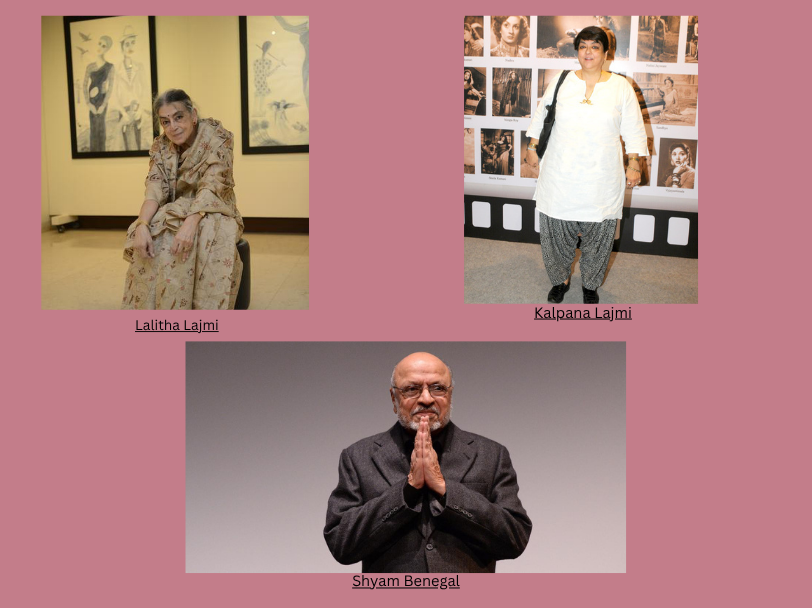
Guru Dutt as director, does not quite lend himself to a single genre. You cannot bracket him as a director specializing in family melodrama. You cannot label him as one who specialized in the thriller genre. You cannot call him a tragedy specialist. Yet, he has directed these kinds of films. His directorial oeuvre is limited considering his long span as a filmmaker. But he has never surrendered to cliché. Some of his films did not do well commercially yet, they are memorable.
Also Read: Remembering Mohammed Rafi and His Golden Voice
They were very poor. Dutt’s early childhood was spent within the cramped space of a small flat in Matunga in Mumbai. His father shifted from one job to another, leaving the family in a perpetual state of economic instability. In 1929, Vasanthi took Dutt along with her and went to Calcutta. Shivshankar joined them later where he finally settled down to a job with the Burma Shell for 30 long years. The family shifted residence several times. While they lived in Bhowanipur in south Calcutta, Guru Dutt became an avid fan of jatra performances regularly performed in an open space next to the house they lived in.
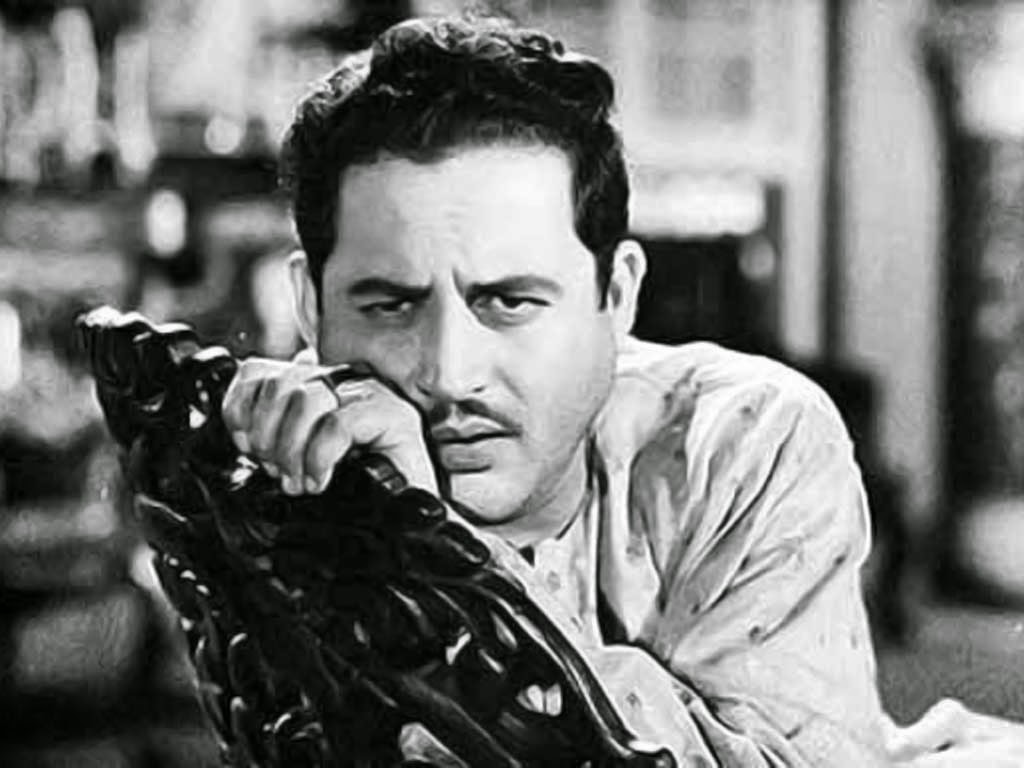
He learnt to speak Bengali fluently and this stood him in good stead for the rest of his life. His mother Vasanthi’s cousin B.B. Benegal, a designer and painter of cinema hoardings, influenced the Padukone children and played a special role in the moulding of Guru Dutt. Dutt finished his schooling in 1940 and soon after, became a telephone operator. It was his first job. During this time, in the company of his cousin Sudarshan Benegal, Dutt began to photograph the animals in the Alipur zoo or the plants in the Botanical Gardens. His first performance on stage was a piece Guru Dutt choreographed and composed himself. A painting of a man with a snake coiled around his body done by B.B. Benegal inspired him. He performed for a function organized by the Saraswat community of Calcutta and drew a lot of applause including a prize of Rs.5.00 from an impressed member who was later to distribute Guru Dutt’s C.I.D.
As a versatile director, it is truly difficult to capture Guru Dutt’s work as his early directorial films changed somewhere in the middle, till it radically transformed him as auteur in terms of form, content, style, perspective and approach
Soon after this performance, with the help of his uncle B.B. Benegal and another friend of the family, one S.R. Hemmad, Guru Dutt won a five-year scholarship of Rs.75 per month to study dance at the Uday Shankar Culture Centre at Almora. He trained under Uday Shankar from 1942 to 1944. Guru Dutt left Almora when the Culture Centre closed down. The Padukones had shifted to Bombay. Dutt went to Bombay to join the family. Dutt took counsel of B.B. Benegal who took him to Pune and introduced him to Baburao Pai, Chief Executive of Prabhat Film Company[ii] and studio, who helped him sign a three-year contract with Prabhat as dance director. During this three-year tenure, Dutt also functioned as occasional actor in some B-Grade productions of Prabhat and assisted the director. Here, he learnt every aspect of filmmaking.
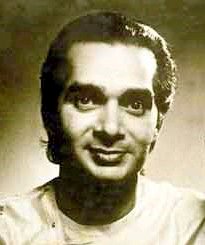
As a versatile director, it is truly difficult to capture Guru Dutt’s work as his early directorial films changed somewhere in the middle, till it radically transformed him as auteur in terms of form, content, style, perspective and approach. He was a lyrical filmmaker who understood not only the value of the marginalized, including women, but more importantly, the value of poetry (Pyaasa), of cinema (Kaagaz Ke Phool) and, in Sahib Bibi Aur Ghulam, of the marginalized but silent and ‘invisible’ oppression of Bengali women in zamindari families of colonial Bengal.
Also Read: In Conversation with Shoojit Sircar on I Want to Talk
He met Dev Anand, who became a close friend for life, during the making of Anand’s first film as hero, namely Hum Ek Hain (1946), produced under the Prabhat banner. Dutt left Prabhat in 1947 and came back to Mumbai. He was unemployed for one year because of the depression the Partition and independence had brought about. He then joined Gyan Mukherjee as assistant. Mukherjee was famous for having directed Kismet (1943), the biggest hit till that time. So, Dutt felt privileged to be able to assist him. Film production had shifted from the studio system to the star system. Financiers who had made a lot of money on the black market during the war offered big money, including cash payments, to the actors. Technicians and music directors also began freelancing on a contractual basis, a system that continues till this day.
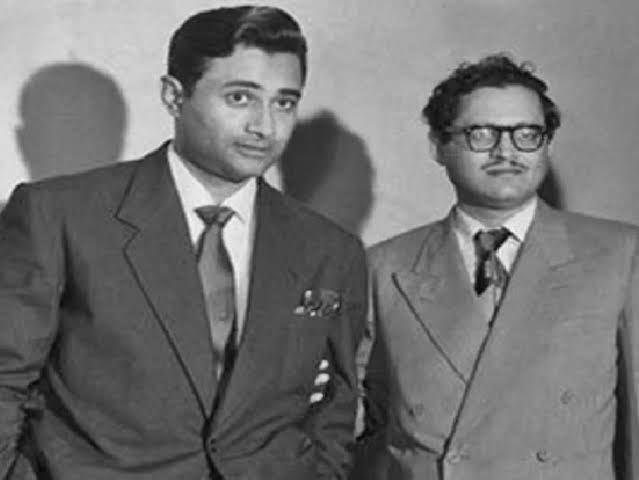
But the long phases of depression he experienced, complimented with his stormy relationship with wife Geeta[iii], made it obvious that he had taken his own life. He had begun to drink a lot, though he never drank during a shoot. He was an incurable insomniac. A little before his death, he had shifted to a new flat at Peddar Road where he lived alone with Ratan, a servant, for company. He had made earlier attempts at suicide too. Unlike those earlier attempts, this time, he succeeded. He left behind him, his wife Gita, three small children – Tarun, Arun and Nina, his production banner, one unfinished film BahareinPhirBhiAayegi, (a remake of an old New Theatres’ hit called President) his lifelong friends in cinema and his loving brothers and sister. BahareinPhirBhiAayegi had to be re-shot completely after his death with Dharmendra stepping in place of Dutt who originally played the hero in this triangular love story. The film was a miserable flop.
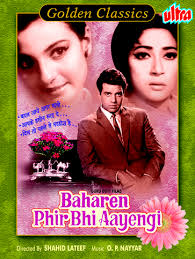
His sons Tarun and Arun organized a retrospective of his films in 1980, supported by distributor L. Lachman. His works stood out among other Indian films made in the Fifties that began to feature at international film festivals in France, Italy and the USA. Some of his films were shown on British television while Pyaasa and KaagazKe Phool were released in Paris cinemas. Pyaasa was featured in a festival of Indian films in Tokyo. Guru Dutt himself would not have had any idea about the international and critical acclaim his films would draw in course of time. Death, ironically, has brought the kind of recognition that echoes his own feelings in Pyaasa– that a true artist is often valued only after his death.
[i] Kabir, Nasreen Munni: Guru Dutt – A Life in Cinema, OUP, Delhi, 1997, pp.1-2.
[ii]Ibid.p.19. Prabhat Film Company was originally founded in Kolhapur in 1929 by V.G. Damle, S. Fatehlal, S.V.Kulkarni and V. Shantaram. They moved to Poona (now Pune) in 1933 where they set up a lavish and well-equipped studio. Prabhat, New Theatres and Bombay Talkies were considered the most influential North Indian studios of the 1930s, each producing highly-acclaimed films. The considerable land area on which the studio stood along with the structure were given away to the Government of India when the Ministry of Information and Broadcasting set up the Film and Television Institute of India in the early Sixties.
[iii] Geeta (Roy) was born in Faridpur (now in Bangladesh), and received music training from HirendranathNandy as a child. In 1942, during the Quit India movement, the family left East Bengal to settle in Mumbai’s Dadar, Hindu Colony, and a short walk from the Dutts’ Matunga flat. The Roys were so poor that they had to push Gita into professional singing and stopped her music lessons because they could not afford it. Music director Hanuman Prasad introduced her in Bhakta Prahlad in 1946. But her first major hit was the song merasundarsapna beet gaya under the baton and mentoring of S.D. Burman for Do Bhai (1947.) Geeta Roy worked with all the leading music directors of her time, and was already a much-chased-after singing star when the Dutt family first met her during the muhuratof Baazi. The Roys were very shaky about her marriage to Dutt firstly because she was already very famous and earning a lot of money. Secondly because Guru Dutt was unknown at the time and earned very little compared to what she did. Thirdly because they suspected that Dutt was marrying her for her earning power. Fourthly, because they were reluctant to let go of the family’s primary earning source. She married Guru Dutt on May 23, 1953, after a long courtship of three years. After her marriage, Gita rarely sang for films other than the ones made under her husband’s banner, though she was much in demand. The Dutts had a very stormy married life. But Gita loved him in her own way and rebuffed all offers of marriage after Dutt passed away since she was quite young at the time. She took to drinking soon after her husband’s passing away and died of cirrhosis of the liver. Her songs remain archived in the history of Indian film music.
All Rights Reserved
Image Courtesy:
Shoma A. Chatterji is a freelance journalist, film scholar and author based in Kolkata. She has won the National Award twice, in 1991 and 2000. She has authored 26 published titles of which 14 are on different areas of Indian cinema. She holds two Masters Degrees and a Ph.D. in History (Indian Cinema). She has also won a few Lifetime Achievement Awards from different organizations over time.


